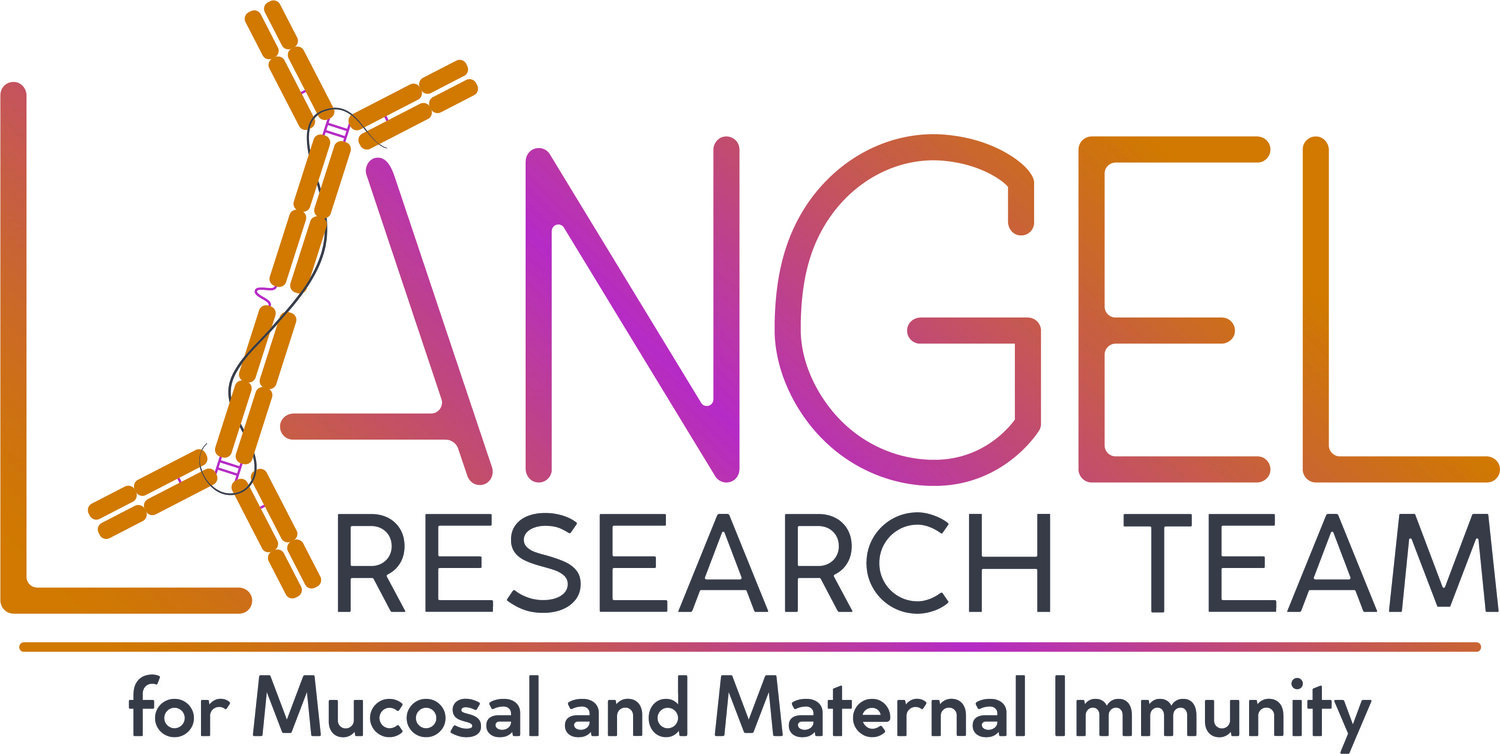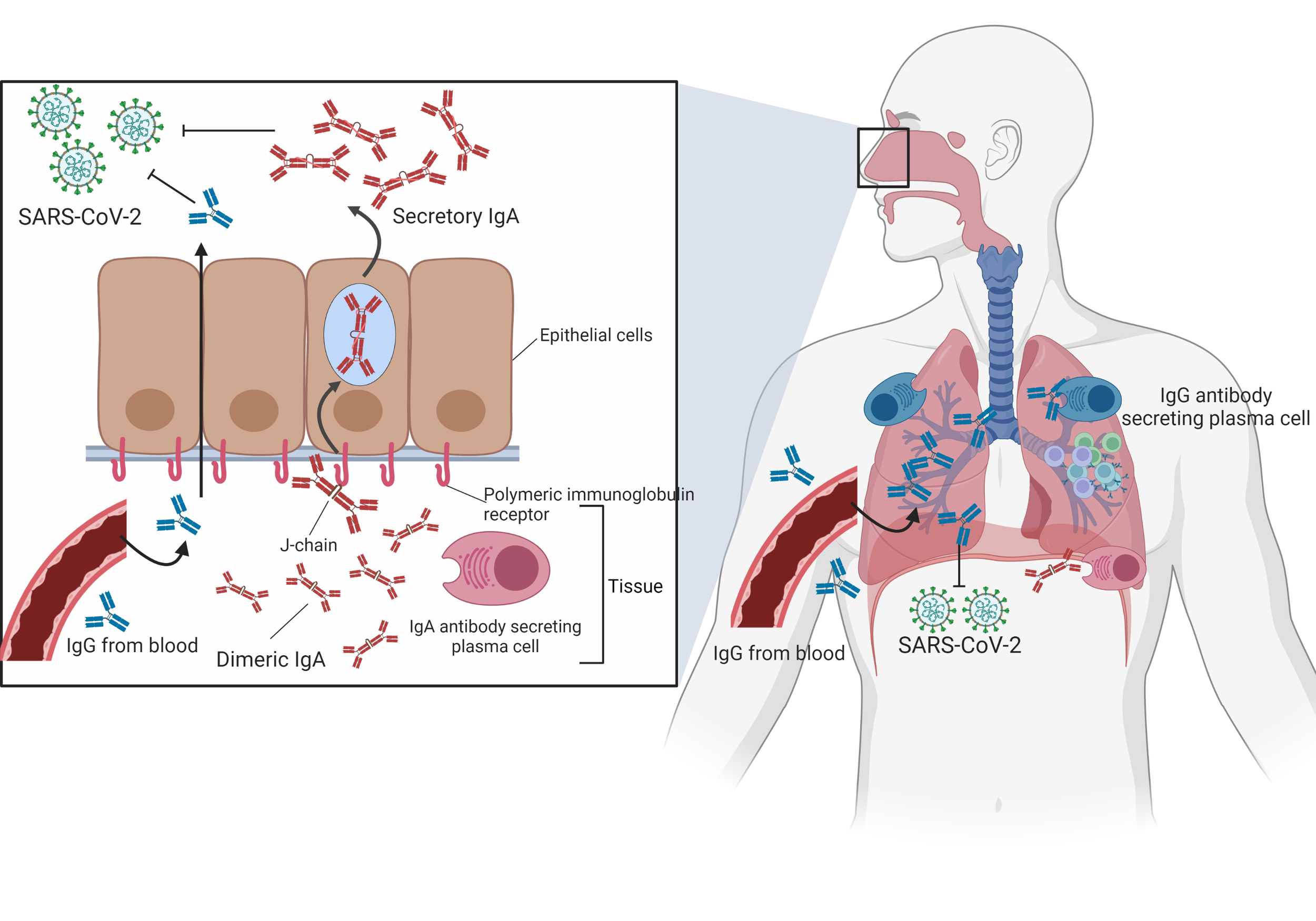Mucosal immunization & transmission immunity
The mucosal surface of the upper respiratory and gastrointestinal tracts are the initial sites of virus replication and primary sites of infection. Interventions that induce robust mucosal immune responses and promote resident memory B and T cells may have the greatest impact on reducing infection of respiratory viruses like SARS-CoV-2 and influenza or gastrointestinal viruses like rotavirus and norovirus. Specifically, mucosally-delivered vaccines are promising strategies to reduce transmission of these pathogens. We are interested in understanding the mechanisms that lead to the generation of local antibody-secreting plasma cells and transcytosis of antibodies, particularly secretory IgA, to the mucosal surface. Defining transmission immunity and identifying correlates of immune protection against viral transmission in humans is key to maximizing protection against infectious diseases.
Studying transmission of viruses, particularly respiratory viruses is a difficult task. It requires highly sensitive methods for detecting viruses and antibodies (and virus-antibody complexes) in mucosal fluids but also in aerosols, an understudied immune component. The Langel Research Team’s goal is to define the dynamics virus-antibody interactions in aerosols after coughing, sneezing, or evening breathing. We will use in vivo systems to understand transmission dynamics and test therapeutic strategies against viral infection, transmission and disease.
Secretory IgA and IgG in the upper (left) and lower (right) respiratory tract derived from antibody-producing plasma cells or blood.
Image created with BioRender.com by S Langel

